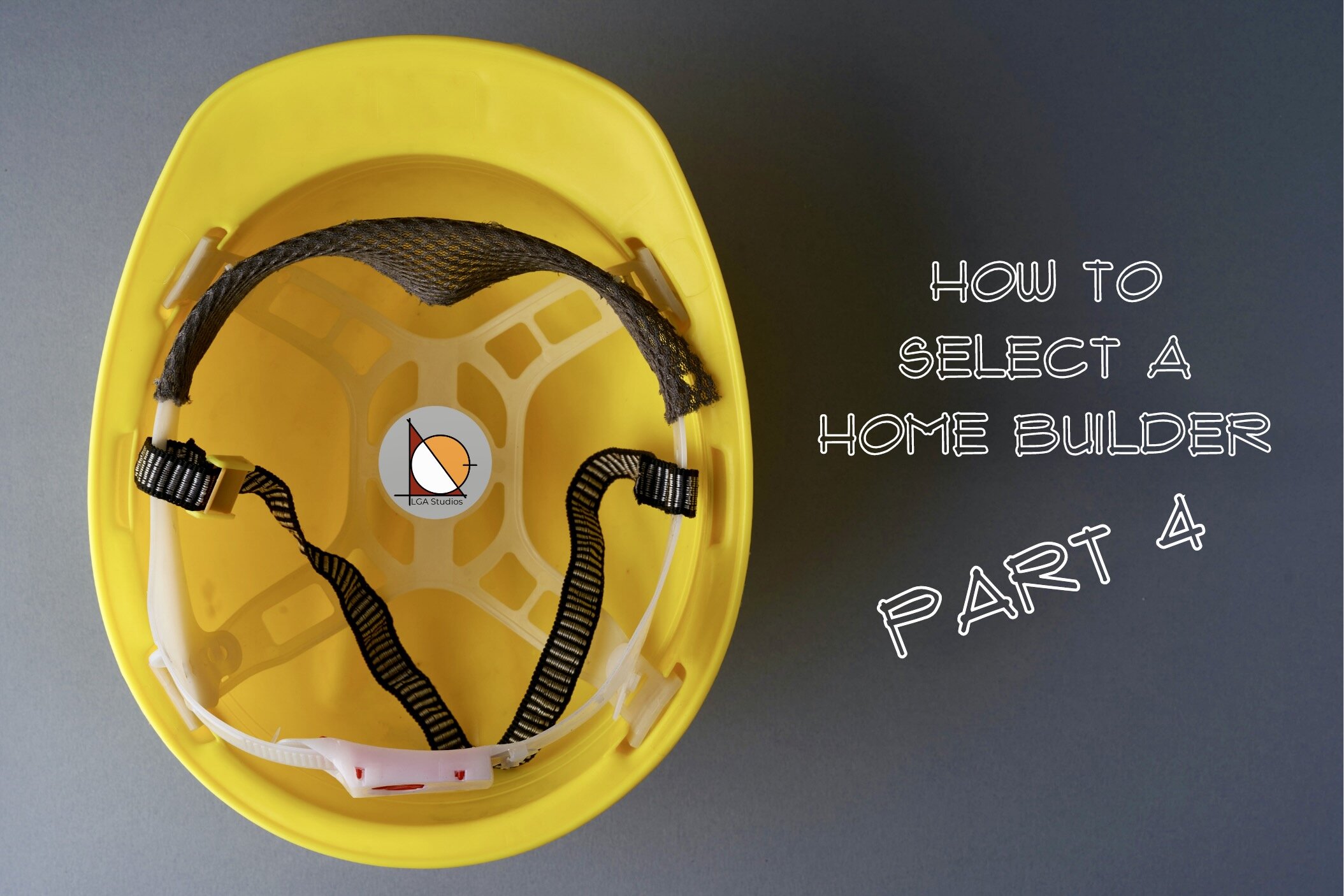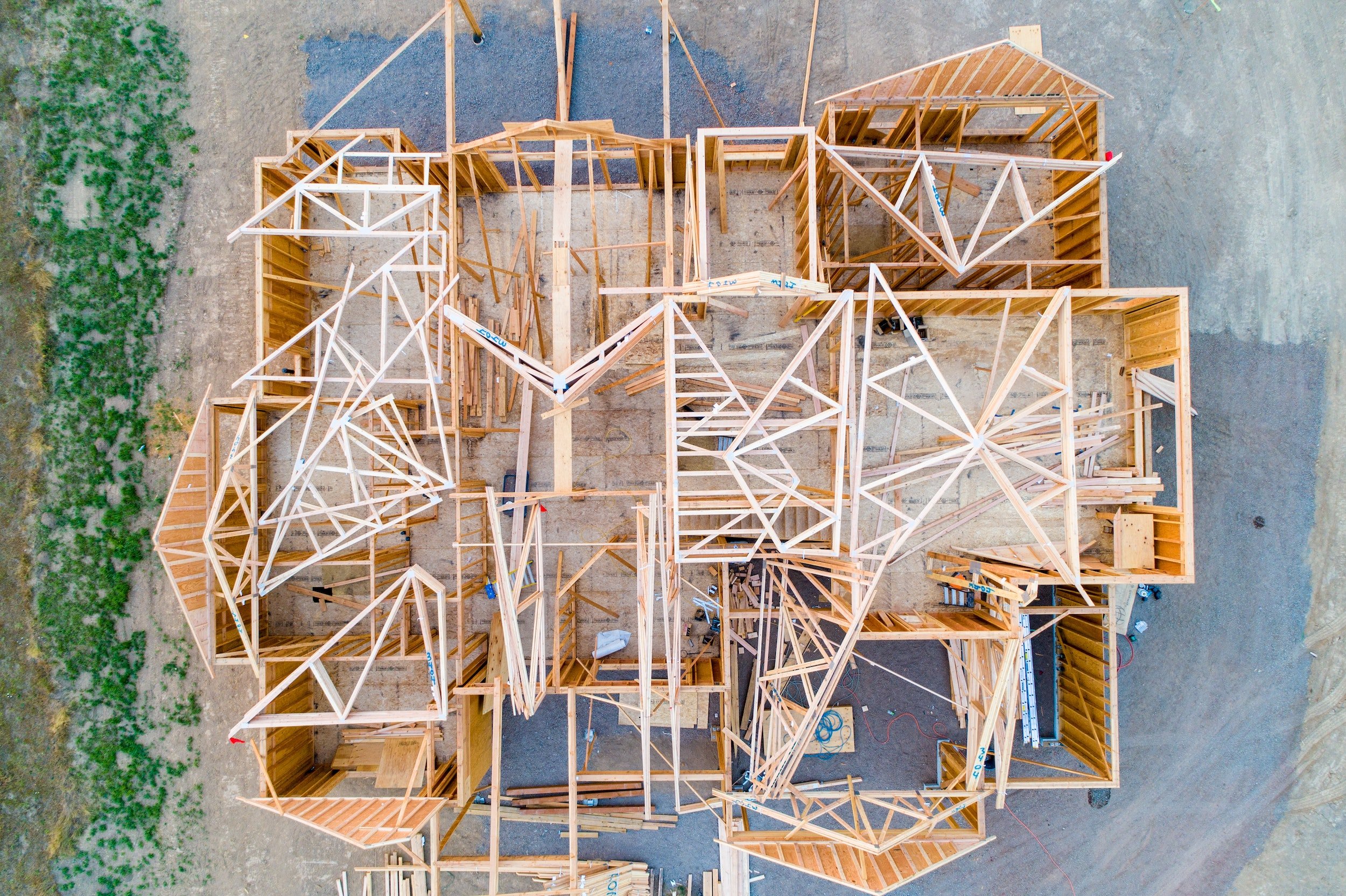How to Select a Home Builder, Part 4
▱ Part 4: A Contractor's Portfolio ▱
By Larry Gilland
▱ Tour through houses: When arranging interview appointments, request that the builder–not a supervisor–tour you through at least two homes they have recently built: a completed home and one which is presently under construction.
Completed Home Tour: Homes which are complete should be occupied. This will give you an idea of what a typical finished home should look like. Try to ignore poor interior decorating when it occurs, which is not the builder’s fault.
If the homeowner is present, watch the silent communication between the homeowner and the builder. This can give you a great deal of insight into the final relationship of the employer and employee. Obviously, the builder will not show you a home where the homeowner is disgruntled. If possible, ask a few questions of the homeowners. Inquire about how they liked building their own home and if you might contact them if you should think of any questions later (and you will). Give the owner your information so they have more control over their privacy.
When they call, have a list of questions to ask pertaining to how smoothly the construction went and what hindsight they’ve had. Ask them for advice–they will give it. They may be anxious to caution you about something that was horrible. Be prepared for anything. Building a custom home is such an emotional and momentous event for most homeowners that they welcome sharing their experience.
On the tour, the builder should point out special items in the house. Ask yourself if they have gone the extra mile for the homeowner. Do you think they enjoy their work? If they do, they’ll do a better job for you and be more receptive to your requirements.
How are the appliances and fixtures chosen for the house? Some builders determine a budgeted amount for appliances and fixtures and "allow" the homeowner to choose from a limited selection of items. Other builders will escort the homeowner(s) to various manufacturer’s showrooms to discuss the selections which are available. If the homeowners have the time to comparative shop on their own, the latter situation will prove more rewarding, adding to the individuality of the custom home.
Homes Under Construction Tour: When you walk through a home that is under construction, you'll need to make written and mental notes about a number of things. Listen to the contractor as they point out various unique features contained in the house.
A) Building techniques and quality of structure: The well-decorated interior wall might be hiding a surprise. Shabbily built homes can look wonderful with a new coat of paint. If you educate yourself, you can ask some intelligent questions at this point.
B) While at the construction site, observe the relationship between the builder and the subcontractors (the individuals who are actually working on the house). A builder who maintains a good working and professional relationship with the subcontractors will be most able to control the quality of the subcontractors’ work. However, don’t rule out a builder if you observe a poor attitude with one of the "subs." Everyone can have a bad day and we all know there ARE jerks in the world. If your tour is interrupted when the builder is required to oversee a situation, you can ask a brief, casual question to the "subs" nearest you. Their verbal and non-verbal responses will tell you a great deal.
C) Is the construction site orderly and clean? A clean building site doesn't ensure a well-built house, but it does show that the subcontractors are proud of their work and respect the builder and the homeowner. Cleaning up the building site is one expense that can be kept to a minimum if the subcontractors cooperate in the effort. Delay of a building project because of accidents due to hazardous surroundings can increase the building costs and decrease the quality of structure.




